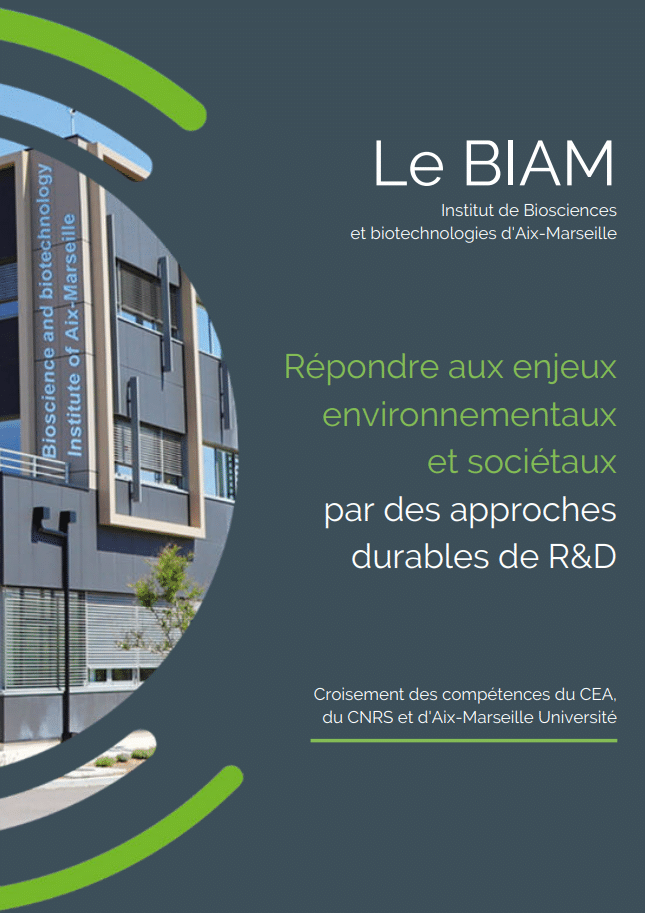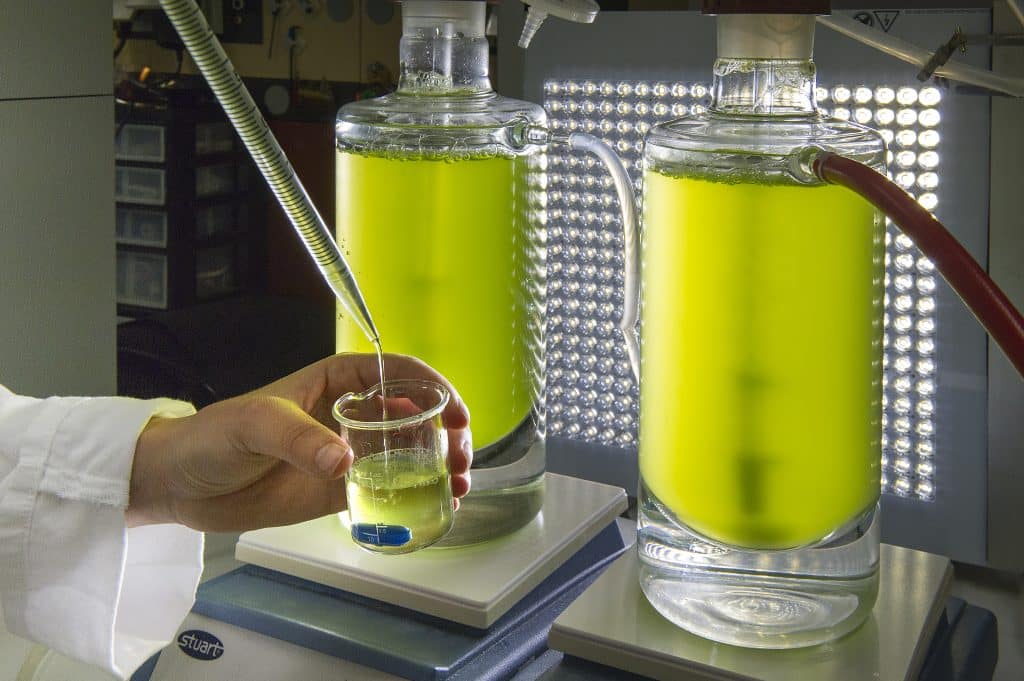A novel protein with dual function: a key for optimal carbon and energy storage in algal cells

Microalgae and Bioenergy BIAM researchers have identified a key protein, ABHD1, which plays a central role in the management of lipid droplets, the cell’s energy and carbon reservoirs. In addition to deepening our understanding of fundamental cellular mechanisms, this discovery could revolutionize algae engineering by improving cellular oil content, and opening up new perspectives in […]
How do magnetotactic bacteria navigate
in sediments using the Earth’s magnetic field?

Researchers have shed light on the fascinating behavior of magnetotactic bacteria, which use the Earth’s magnetic field to navigate in complex environments. These microorganisms, which live within sediments, have demonstrated a unique ability to adapt their movement to avoid obstacles. A discovery that opens up new avenues on the understanding of microbial motility and the […]
Strategic Photosynthesis:
The CDSP32 Enzyme Emerges to Support Plant Adaptation

BIAM researchers have highlighted the role of an enzyme, the thioredoxin CDSP32, in adjusting the photosynthetic metabolism of plants, in response to fluctuations in their environment. This advance could contribute to the development of crops better adapted to climatic challenges. Photosynthesis, metabolism essential for plant growth and life on Earth, converts light into molecules such […]
i-PhD Grand Prix

Alcasun, the biosourced revolution: Exclusive interview with the winner Alcasun is a biotech start-up project targeting cosmetics, green chemistry and bioenergy markets. The founders of this future startup have succeeded in isolating an algal enzyme capable, in the presence of blue light, of converting fatty acids into hydrocarbons (or alkanes) for cosmetic use. Alcasun’s ambition […]
Teaching training

Le BIAM A Key Player in Environmental Biology Education Supporting and Integrating Students into Our Institute Our institute is deeply committed to the development and support of student training. In an enriching and stimulating environment, we welcome postgraduate students (Masters and Doctorates) as well as trainees at all levels, whether through traditional programs or sandwich […]
CO2 sequestration by algae:
the energy source behind the process unveiled

An international collaboration between BIAM researchers and the Carnegie Institution for Science in Stanford (USA) has revealed how solar energy is supplied to metabolic reactions of algal cells to fuel atmospheric CO2 fixation. This discovery provides an understanding of the fundamental basis for efficient CO2 sequestration by microalgae. These images show where the mitochondria are […]
Unlocking Plant Resilience: Evolutionary Synergy in Stress Adaptation

A groundbreaking mechanism enabling plants to optimize their photosynthesis has been unveiled by a scientific collaboration led by the BIAM. Remarkably, this discovery involves molecules of bacterial origin, and opens promising avenues for developing agriculture that is more resilient to climate change. Chlorophyll fluorescence images of plants for analysis of photosynthetic activity Photosynthesis, fundamental to […]
Unveiling a Resistance Mechanism in Staphylococcus Aureus

Staphylococcus aureus, a leading cause of fatal bacterial infections worldwide, has been extensively studied. Research conducted by INRAE in collaboration with the BIAM has revealed a key protection mechanism of this bacterium against a toxic molecule found in mammalian blood. This breakthrough paves the way for developing new antibiotic strategies. Bacterial infections are the second […]
RESTORE Project

The RESTORE Project,is inspired by solutions selected by nature To restore biodiversity to forest soils and improve the survival of replanted young trees The project in comic book version here The RESTORE (natuRe-basEd SoluTions for imprOving REforestation) project aims to study the interactions between plants, soil and microorganisms (microbiomes*) in forest ecosystems facing increased drought […]
Mystery unveiled for an exploration into the mysteries of cell growth

Plants resistant to a key inhibitor, with a strong influence on the process of cell growth, have been discovered by a team from BIAM. This is an asset for a better understanding of plant growth regulation, with potential implications in both the food security sector and the treatment of inflammatory diseases and cancers. The study […]